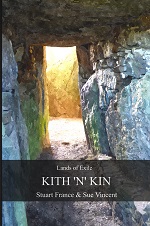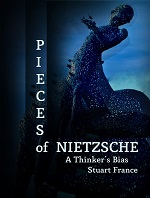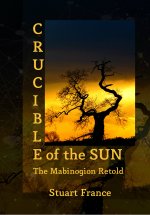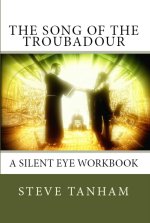All my life I have visited sacred sites when I could, and I have been lucky enough to visit many. Whether ancient church, temple, stone circle or legendary landscape, there is something about these sites that touches a place deep within. Perhaps it is a sense of kinship with those who built them, perhaps a sense of shared reverence for that greater Something touched unseen beyond the veil.
It has never mattered to me how that divinity was approached or what form it took, only that it was perceived, recognised by the heart and present in the lives of the builders. They, and I, share perhaps, a common sentiment, expressed in my favourite Hindu prayer, “Thou art without form, but I worship thee in these forms”. In these often strange, yet somehow familiar, edifices and landscapes we can glimpse the very real place that divinity took in the lives of our forefathers.
Theories on the technologies and purpose of these places abound. Yet have you ever stopped to consider the amount of sheer hard work that went into their building? Silbury Hill, for instance. It has been estimated that it would have taken 500 people, working every day for 10 years to construct the hill from 500,000 tonnes of chalk and earth. Stonehenge with its small forest of stone, in excess of 1200 tons… and the bluestones transported all the way from Wales.
 I have driven from Presceli where the bluestones were quarried to Salisbury Plain. Even in a fast car on a clear road you are looking at a four hour drive. And four and a half thousand years ago there were no nice smooth roads. I worked in transport for a long time with cranes and often had to organise the transport and installation of large sculptures. Even with modern technology it is no easy task. Can you imagine what was involved in terms of sheer effort for our ancestors to move these great stones so far?
I have driven from Presceli where the bluestones were quarried to Salisbury Plain. Even in a fast car on a clear road you are looking at a four hour drive. And four and a half thousand years ago there were no nice smooth roads. I worked in transport for a long time with cranes and often had to organise the transport and installation of large sculptures. Even with modern technology it is no easy task. Can you imagine what was involved in terms of sheer effort for our ancestors to move these great stones so far?
Wonderful churches and cathedrals sit in the midst of our towns, passed daily with barely a glance by many of us, yet these edifices are a testimony to ingenuity, innovation and craftsmanship, lifetimes of artistry and work. Here at least we can understand in modern terms how an artist would work for a living, yet those who built the ancient places … what drove them to do so? Would they not have been better occupied pursuing the necessities of survival?
 They appear not to have thought so. Someone must have fed them, cared for their children, their parents and for them, so in the harsh and uncertain environment in which they lived, not only the workers themselves were involved in the effort, but whole communities must have supported it and taken part, each sacrificing time and sharing resources to maintain the workforce.
They appear not to have thought so. Someone must have fed them, cared for their children, their parents and for them, so in the harsh and uncertain environment in which they lived, not only the workers themselves were involved in the effort, but whole communities must have supported it and taken part, each sacrificing time and sharing resources to maintain the workforce.
These ancient places, sacred to their builders, speak of humanity. Perhaps the planners, the decision makers, saw power in the building… that too is a human trait… yet to be able to envision such great works, to organise and coordinate, to maintain a workforce and create these wonders of which we see but the remnants, would have taken powerful leadership. It is not as if the tribes were equipped with the weaponry to enforce and impose these projects so many thousands of years ago.
 So what drove them? We cannot know for certain, of course, with the ancient places. No record exists except the enigmatic traces on the landscape. Yet the human heart and mind has not changed so very much perhaps that we cannot divine a recognisable thread.
So what drove them? We cannot know for certain, of course, with the ancient places. No record exists except the enigmatic traces on the landscape. Yet the human heart and mind has not changed so very much perhaps that we cannot divine a recognisable thread.
With the great cathedrals, of course, the wealth and power of the church was displayed. Religion dominated every aspect of life and was a very real force for peasant and noble alike. They took it seriously, awed, fearful of judgement perhaps, loving too and worshipping from the heart. In medieval times the physical and political power of wealth and weaponry could have imposed, the organised power of a multinational religion would have been able to ensure that such works were completed. Yet they could not have imposed the obvious and loving dedication of the artists and artisans who created the beauty that survives.
Amid the simplicity of domestic architecture and the poverty of the cities, amid the homes we would see as hovels, the cathedrals were built, reaching high to the heavens, magnificent structures of lace carved in stone, towering above the surrounding rooftops to the glory of their God.
I can only think that the ancient places too were built for much the same reasons.
Was it simply an effort to propitiate the gods and ensure survival? Yet if so, would the tribes not have been more profitably occupied in smaller works and greater effort hunting, farming and working in known ways to survive? I think there was more to it than that. These places, when we stand among their traces, are so vast, entire landscapes shaped and altered by human effort, sweat and blood, that the only reason I can feel is awe at their perception of something greater and their efforts to somehow reach out to it and bring it into their own life and land.
When I stand in the nave of a tiny chapel, a lonely temple on the moors or amid the splendour of a cathedral, when my bare feet walk the grass between the stones and landscapes carved by human hands, I marvel at their skill and dedication. Yet beyond and beneath the awe at the human achievement is a sense of companionship on a sacred quest, a journey of the soul towards a Light perceived, however dimly, that pervades and illuminates the world and each of us. It matters not how that Light is seen, what Name we use or the stories we have woven in our attempts at understanding. It matters only that It is, and that seeing It, we look for It within. The sacred landscape that is our self is enough.












































I love that Hindu prayer, simple lines that sum up and respect an eternity of human worship.
LikeLiked by 2 people
So do I. Those few words seem to say it all for me.
LikeLiked by 2 people
It’s a fascinating question what motivates such individual and group devotion. I wonder at the Japanese and their suicide missions in defence of their Emperor or the modern version s in support of their journey to paradise. What drives such blind – to me – sacrifice? Are they signs of worship or the human ability to brainwash. How noble was such sacrifice? And who judges such questions as nobility or brainwashing versus alternative motivations. I guess we will never know.
LikeLiked by 1 person
Duty and their historic code of honour were the driving factors behind the suicide missions of the Japanese airmen. Unquestioning loyalty, even in the face of defeat. By their code, an honourable end…by ours? Are we so different with ‘the old lie’? I have never understood the desire to die for a belief..I would rather live for it.
LikeLike
Exactly but somehow we are capable of convincing ourselves that It is the way to go.
LikeLike
We are an odd species sometimes…
LikeLiked by 1 person
That indefinable sense of kinship, a subtle sharing of something that you feel but can never describe…
LikeLiked by 1 person
Yes…that’s it. ..
LikeLiked by 1 person
Really like your interpretation of sacred places such as churches, cathedrals, stone circles… Everytime I set afoot these places, there’s always a certain hushness and tranquility all round. Maybe kinship and really togetherness has some invisible far-reaching effect that we feel in the present. Most of these structures probably took a long time to build, built out of passion and so these works of art can take so long (think Gaudi’s unfinished Basilica).
LikeLike
What is sacred takes many forms..not all of them easily recognised by the eye, but the heart seems to know …
LikeLiked by 2 people
Well said, Sue. The heart seems to know…sometimes you just know ❤
LikeLiked by 1 person
Reblogged this on Campbells World.
LikeLiked by 1 person
When I read posts like these it is as if I’m visiting the places described. I feel their power, and I agree mightily with the words that state it matters not what we call them but that they’re seen.
Wonderful stuff.
Reblogged onto campbellsworld.
LikeLiked by 1 person
Thank you, Patty.
LikeLike
Reblogged this on Not Tomatoes.
LikeLike
Thanks, Alethea xx
LikeLike
Yes!
LikeLiked by 1 person
A lovely post, Sue. I too often wonder about the amount of work and dedication and resources these places took to build, and what thoughts lay behind the effort. It’s fascinating and I wish we could peek back in time and understand with more clarity. ❤
LikeLike
I think we can… if we take time to really look at these places.
LikeLiked by 1 person
Yes it is a wonder how they built such wonderful cathedrals that are still standing. But we went to Ypres last week and saw the cathedral that was re-built after WW1. It brought tears to my eyes, in fact they rebuilt the whole of the town from total devastation and its hard to tell the difference, Lots of the churches I visit in Germany, a great many are rebuilds, they didn’t flatten them, they rebuilt them nearly the same……that dedication I find amazing 🙂 We also went to Laon in France and visited the cathedral there, which only just missed being damaged, a bomb landed outside, it has only just come home to me how many wonderful places were damaged and how many they rebuilt.
LikeLike
There is a real sense of connection and history when you see these churches rising like the proverbial phoenix from the destruction we have wrought. It seems to reinforce how small the affairs of humankind might be in the greater scheme of the universe.
LikeLiked by 1 person
Its amazing what man can build and also destroy in a second….. I hate think where it’s all going to end.
LikeLike
I hope we can outgrow our tantrums.
LikeLiked by 1 person
I just hope we have time. Sorry, but I hate the way man has nearly destroyed/destroying this beautiful planet.
LikeLike
I hope so too.
LikeLike
I really enjoyed this post. Thank you!
LikeLike
Thank you 🙂
LikeLike
It often seems that they had a deeper understanding and appreciation than we do today. Perhaps living in simpler times allows for that.
LikeLike
Or living closer to the life of the earth, perhaps.
LikeLike
Now, that is an excellent thought! Sue, you realize
LikeLiked by 1 person
Oops… meant to finish you sao
LikeLike
Meant to finish, you said perhaps living closer to life on earth. Did you mean living closer with nature? That certainly fits the bill.
LikeLike
Pretty much, Jennie 🙂
LikeLiked by 1 person
😀
LikeLiked by 1 person